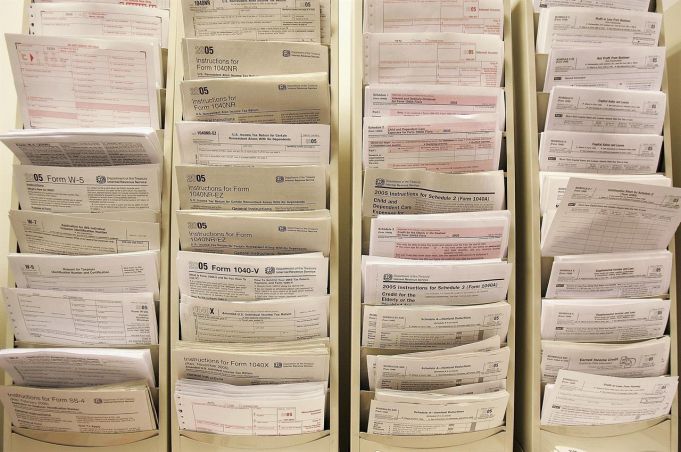Guide to help expats navigate their way through Italian bureaucracy.
Many expats protest about bureaucracy in Italy, but let’s be fair: this scourge exists in every society. And as more and more forms need to be filled in on line, with computers rejecting our answers and unable to understand our attempts to tell them who we are, frustration can quickly build up.
Here’s a brief guide to how to talk to computers (and unfriendly officials) who ask us who we are – be it to open a bank account, apply for an identity card, or simply start any official enquiry in Italy.
As in most other countries, we are almost always required to provide our name and date and place of birth before the conversation can get started. Simple, no? Well, not always…
Name
You would think this was the easiest part, but that’s not always the case. In Italy, for official use, the correct format is surname (family name) followed by forename(s) – once known as Christian names. Yes, it makes you feel like a prisoner or a defendant in court, but you are not John Smith as you always thought, you are Smith John.
It is tempting to object that nobody would think to refer to the president of the republic as Mattarella Sergio, but there it is – we’re supposed to introduce ourselves that way. To be fair, it probably makes a lot more sense for a long list of school-kids’ parents or newsletter subscribers to be sorted with all the Rossis together rather than all the Giovannas.
In Italy it is relatively unusual for people to have more than one separate forename (although joined-up combinations like Giampaolo are not uncommon). So the space available for forenames on forms is usually fairly restricted. Members of the British royal family would certainly not be able to cram all their multiple forenames into an Italian form.

Even if you are forced to cut off – even in the middle of a name – when the space has run out, ensure that you provide as much of your full name as you find room for: officials (and computers) will be tolerant if you run out of space, but will usually look askance at somebody claiming to be John Bernard Smith on one form (or identity document) but only John Smith on another, suspecting that these are two different people.
Women can run into another problem with names, however: while it is usual for a married woman to take on her husband’s surname in North America, the UK and many other countries, the Italian custom is for her to keep her maiden name. According to the civil code dating back to 1942, the husband’s surname is automatically added in second position after the wife’s maiden surname, but it does not normally appear on documents such as ID card, passport or driving licence. A later court sentence made this addition optional, with the bride being offered the choice, which has made for a confusing situation. When moving to Italy, women especially should ensure that their new identity documents all show the same surname, whichever version they have chosen.
Date of birth
This time, easy for most of us. But Americans can sometimes have problems with this because of their counter-intuitive convention of starting with the month, dropping back to the day, and then jumping two steps forward to the year. As in most other countries, Italy uses the more logical format of starting with the day, proceeding with the month and finishing with the year. Computers will of course spot and reject the US format if we try to tell them we were born on December 31, the 12th day of the 31st month, but they won’t always notice the incorrect age of an enquirer born on 08-03 (or 8 March) – they’ll simply log him or her as born on 3 August.
Place of birth
This is where things can become tricky, especially for foreigners (and if it’s of any comfort, also for Italians born in another country). The Italian format is to use the name of the comune or municipality of birth, followed by the two-letter code for the province, which used to be familiar to everybody from vehicle licence-plates, a format phased out in 1994 but still seen on older cars. This is quite similar to the US format of the city name followed by the abbreviated ID of the state.
More and more often, the exact town of birth of a foreigner (or foreign-born Italian) isn’t required: in the place for the comune now goes the country, and in the place of the province now goes a code for “abroad” – usually EE. The problem is that computers are programmed to check that your response is acceptable and not a nonsense reply like “Somewhere, USA”. To do this, they hold a list of acceptable countries: this may be easy with a visible, drop-down list in which you find and click on the appropriate response, but it can be more frustrating with a list they don’t make visible, simply accepting or rejecting your response if it doesn’t fit with what they are programmed to recognise.
This poses particular problems for Brits: a surprising number of them are not clear on the differences between England, Britain, Great Britain and United Kingdom. Unfortunately (but more understandably), nor are many Italian computer programmers. This means you may have to experiment with various possibilities until you hit on one the computer is prepared to accept, all in Italian.
As good practice gradually spreads, more and more computers are being programmed to accept Regno Unito di Gran Bretagna ed Irlanda del Nord as the correct answer – and starting to input Regno Unito will usually nudge a computer to provide the remainder of this correct but unwieldy response.
What will happen after Brexit, of course, is anyone’s guess.
Tax code
Since 1973, Italy insists on everybody having a 16-character alpha-numeric codice fiscale from birth, a similar concept to the US social security number or the British national insurance number. The rules governing the makeup of the tax code are fairly straightforward, and can be found on Wikipedia; knowing them helps you memorise your own codice. There are also websites which offer to calculate your tax code free for you if you provide your name and date and place of birth.
There is one simple piece of advice about these DIY tax codes: don’t do it. If they are not provided by, and registered with, the Agenzia delle Entrate (Inland Revenue section of the ministry of finance), there is a possibility of finishing up with an invalid code, and managing the change to a valid one can turn into a nightmare, particularly if you have already been using the invalid one for some time.

Newborn babies in Italy obtain their tax code automatically from the comune of residence when their parents register the birth. Non-Italians obtain their code along with their permesso di soggiorno, or residence permit. The first step is to apply for the permit, for either employment or family reunion; once the application reaches the head of the queue and the incoming expat is summoned to the immigration office to receive the permit, he or she will also be given a provisional codice fiscale to use until the definitive one is sent through the post.
If you are outside Italy, it is also possible to request the issue of a tax code from an Italian consulate. And if for any reason you find yourself in Italy without a tax code, you can request it on the Agenzia delle Entrate website using form AA4/8, printed off and sent by registered mail to the Agenzia together with a photocopy of the main pages of your passport or other ID document.
Anybody, Italian or not, who is entitled to join the national health service Servizio Sanitario Nazionale will be issued with a blue, credit card-sized plastic health card (tessera sanitaria). Since this also bears the codice fiscale, it is universally used for both purposes.
In case of doubt check with your consulate, a notaio (notary) or with you local comune offices.
By Geoffrey Watson
This article was published in the June 2019 edition of Wanted in Rome magazine.

















